The unusual nickname, “Leatherlips” sounds more like a third-grade playground insult than a show of respect. But for the early settlers of Ohio, who were in constant conflict with Native Americans, Chief Shateyaronyah was a man to be trusted. The Wyandot Chief was a friend to Indian and frontiersman alike, and because he never broke a promise, the settlers called him Chief Leatherlips.
The Dublin, Ohio Arts Council commissioned this sculpture as a memorial honoring Chief Leatherlips and his contributions to both Ohio settlers and Native Americans. We discovered this limestone portrait recently while passing through Ohio. The combination of the ancient stone-stacking technique with simple, modern lines is reminiscent of the Sphinx in Egypt …
… (and the lesser known Sphinx of Riga).
In the early 1800s, Chief Leatherlips was a calm voice attempting to help both sides live peacefully. And while respect and trust for him ran deep in the pioneer community, a number of his fellow tribesmen thought that he was selling out, and giving away Indian lands. A few tribal chiefs banded together against him, conducted a mock trial, and then executed him.
America’s expansion into the West was successful, but in the process, the government’s treatment of the Native Americans was reprehensible. Memorials can never right the wrongs, but tributes to brave, historical figures like Chief Leatherlips demonstrate that the voice of reason was part of the dialog. If we’d only listened.
Happy Trails,
James
Last Updated September 7, 2023
Photo Credits:
4. By Lansbricae via Wikimedia Commons
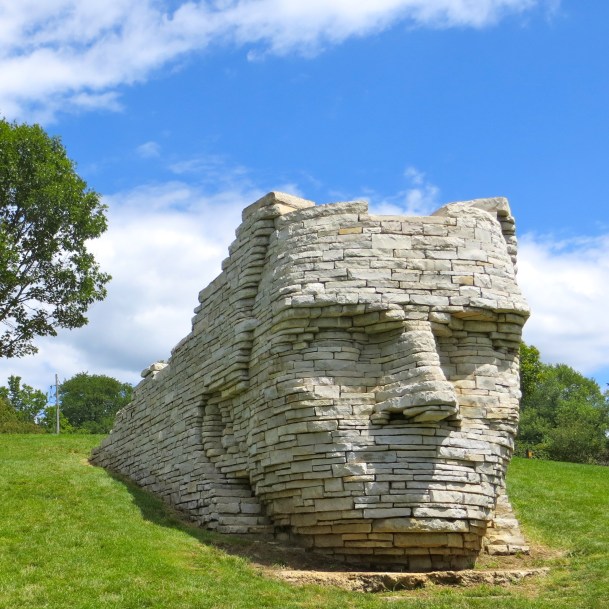
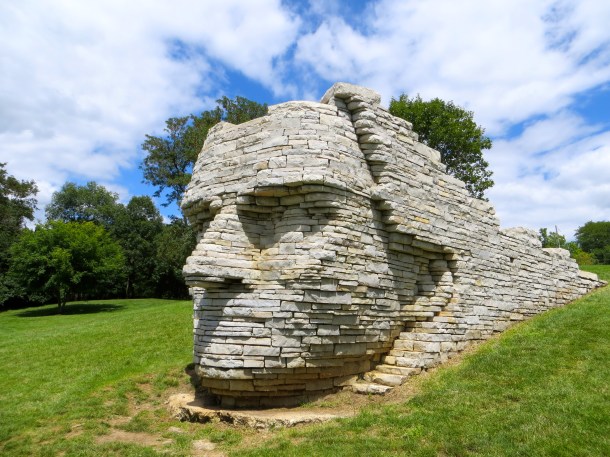
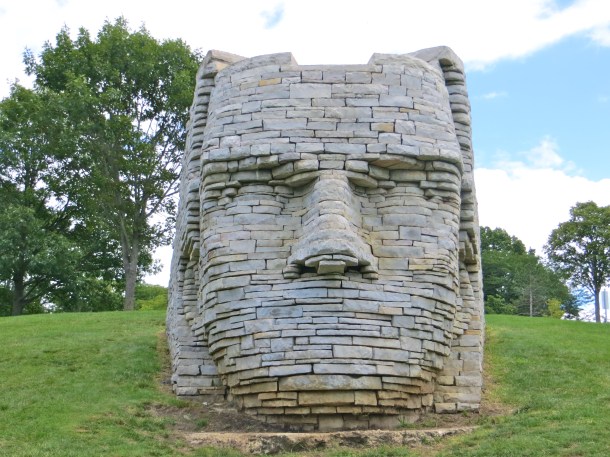

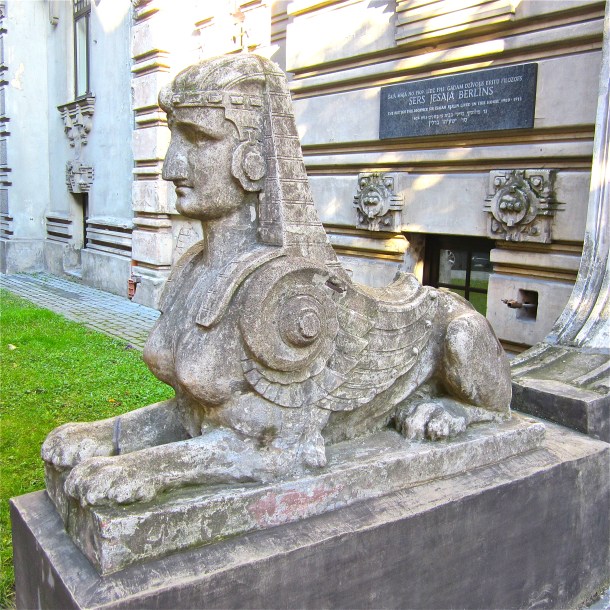
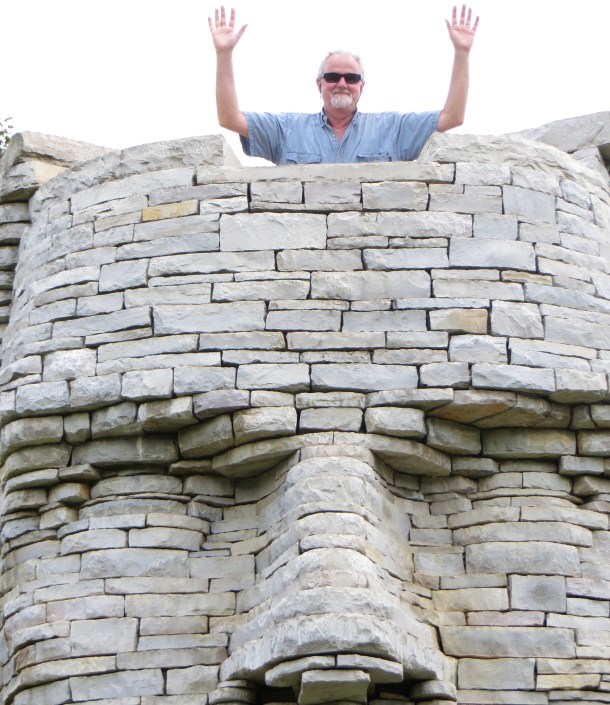
Very interesting story! I love the sculpture too.
Thanks Jessica. The sculpture is an interesting combination of modern and ancient lines. I think it’s quite striking as well. ~James
Australia has been just as guilty in its treatment of the native population here. Hopefully our nations have learnt from their lessons.
Between cruel treatment of indigenous people, and attempts at colonization, there are many countries that should feel ashamed. There’s not much to be done now, but we should never forget. ~James
A fitting tribute for a man of any nation to be remembered as one who always told the truth, a rare thing. On a less serious note, I will say that when I first viewed the sculpture monument, it reminded me of Kryten, the service robot from the TV series, Red Dwarf. 🙂
– Mike
Pretty funny Mike. I hadn’t picked up on the similarity, but you are spot on. ~James
What an unusual and likeable sculpture 🙂
I agree Suzanne. The sculpture is in a delightful, small city park overlooking a small river, so the location adds to the appeal as well. ~James
We were just in Chattanooga, where the Trail of Tears began, and the treatment of the Native Americans is such a sad and shameful part of this country’s history. Thanks for reminding us!
Thanks Betty. Sad and shameful are exactly the right words to describe the treatment of Native Americans, and honestly, we probably only know part of the story. ~James
Now THAT’S getting into someone’s head!
I wouldn’t want to try this with the Sphinx. Hope all is well in SSI. FYI, (not wanting to rub it in) today’s high temp is 76 and the low tonight should be 58 … bliss! ~James
Traveling through Alaska and Western Canada, it is interesting to note that the native inhabitants received better treatment. It helped living on lands that the Europeans/Americans found less desirable. –Curt
That’s a great point Curt. This is the same idea the Mormons had when they settled in Utah. ~James
This is a great tribute and wonderful sculpture to a reasonable and peace-loving man. Your photos of it are marvelous. Excellent little history lesson!
Thanks Cathy. There weren’t many reasonable voices in this conflict, and the people that were should be acknowledged. The Arts Council did a very good thing in Dublin, OH. ~James
What a good looking sculpture, James 🙂
Thanks Jo. I find this sculpture appealing as well. The simple lines make quite an impact, and the location is impressive as well. ~James
Very interesting never heard the story before and that guy on top of his head looks familiar.
Thanks Joyce. I thought it was interesting that they added a viewing platform on top of the head. They probably knew that clowns like me would be climbing up for a picture anyway. Love, JH
Very interesting post and written with a lot of empathy. Thanks for sharing this fascinating look into our recent past. Anita @ No Particular Place To Go
Thanks Anita. Today’s Native Americans are concentrated in isolated spots, and it’s easy to forget what happened to them. It’s good to be reminded periodically. ~James
A fascinating story! Had no idea this even existed!
Thanks Madhu. I didn’t know of Chief Leatherlips either. Discoveries like this are one of the advantages of getting off the beaten path, which I’m sure is a part of your travel strategy as well. ~James
This is a wonderful story. We have been spending our weekdays in the Columbus area, right outside of Dublin, where Terry is having his treatments. We may have to check this out.
Thanks LuAnn. You should definitely check this monument out. It’s in Scioto Park, which would also be a wonderful place for a picnic, or just relaxing in the shade. ~James
Thanks James. Enjoy your weekend! 🙂
A while ago I made this small bronze sculpture as my personal tribute to past chiefs of the wide plains. Based on the idea of Mt Rushmore but showing the face of one of the original inhabitants. http://dragonshades.com/2012/10/20/rockface/ Many thanks for the story.
Thanks for the link to your sculpture. It’s a beautiful piece. After traveling in the Western Plains, I developed a better appreciation for Native America art, and am happy to see it done on both a large and small scale. ~James
Thanks James. I enjoy using art to play with the idea of space both great and small. Your travels and descriptions are really enjoyable.
The photo of you in the head gives this sculpture more perspective. Wow. It IS big and I still like it.